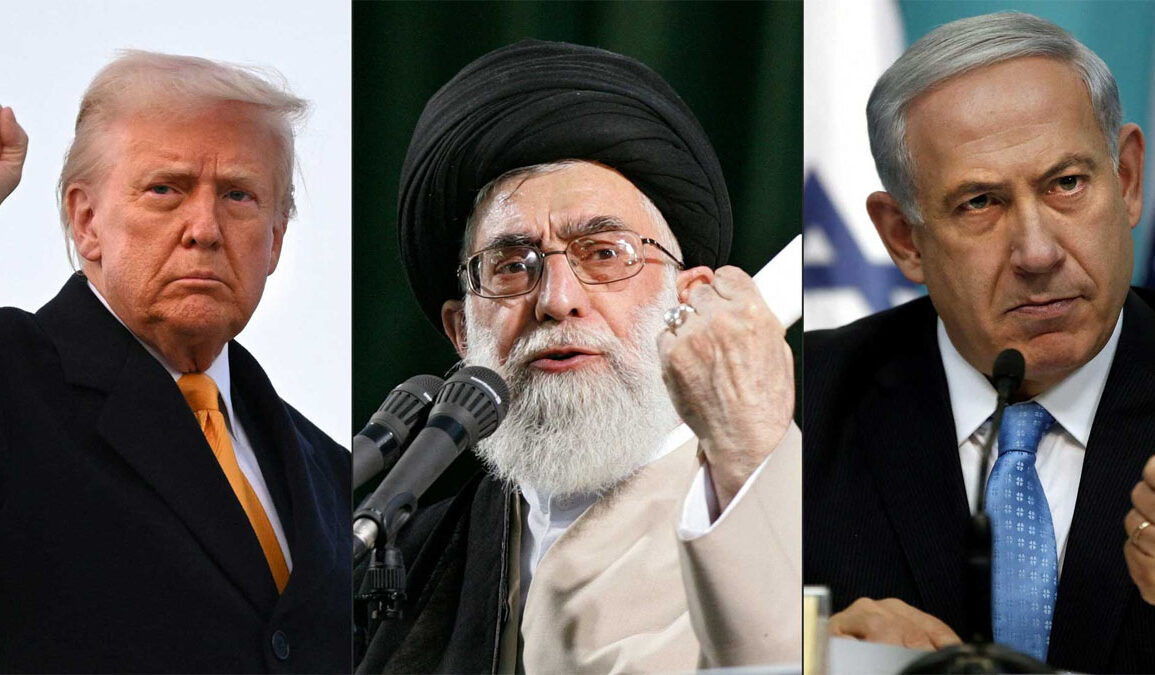Update: The ceasefire has already been violated by both sides, but Trump is attempting to hold it together. Can he do it?
Trump Announces a Sudden Halt to Hostilities
President Donald Trump has announced what he called a “complete and total ceasefire” between Israel and Iran, bringing an abrupt halt to 12 days of missile exchanges, airstrikes, and rising fears of a regional war. The ceasefire is expected to be implemented in phases over a 24-hour period, with Iran initiating the pause, followed by Israel 12 hours later.
In a post on his Truth Social platform, Trump declared: “Congratulations to everyone! It has been fully agreed by and between Israel and Iran that there will be a complete and total ceasefire.” He described the outcome as the end of what he has branded “THE 12 DAY WAR,” adding, “God bless Israel, God bless Iran, God bless the Middle East, God bless the United States of America, and GOD BLESS THE WORLD!”
The president emphasized that this was a war that “could have gone on for years, and destroyed the entire Middle East, but it didn’t, and never will!”
The ceasefire follows a rapid and dangerous escalation. Just days earlier, Israel launched deep strikes into Iranian territory, targeting symbolic and strategic sites, including the infamous Evin Prison and Iranian internal security centers. In retaliation, Iran launched 14 ballistic missiles at U.S. military bases in Qatar and Iraq—13 were intercepted and one was allowed to proceed after being deemed non-threatening.
According to Trump, the Iranian strike was “very weak” and “expected.” He claimed Iran had given advance notice of the attack, calling it a sign that “they’ve gotten it all out of their system.”
The U.S. strikes—particularly those on Iran’s nuclear facilities—were seen by Israeli officials as a unique window to end the fighting. With many of their top military targets already hit, Israeli leaders indicated a willingness to wrap up their side of the operation, though they reserved the right to resume attacks if Iran reactivates its nuclear or missile programs.
What Has Been Agreed?
While the ceasefire agreement itself has not been made public, both sides have accepted a U.S.-mediated proposal brokered through Qatar. The phased timeline appears to allow both Israel and Iran to complete any final military operations before a full cessation of hostilities.
Trump stated the ceasefire would become “official” after 24 hours and that each side must remain “peaceful and respectful” during the transition.
However, Israeli officials stressed that if Iran continues to launch attacks after their mission list is complete, the fighting will resume. Similarly, Israel has not ruled out future strikes should Iran attempt to rebuild its nuclear program.
A Fragile but Real Breakthrough
Supporters of the ceasefire have praised Trump’s role and the timing of the agreement. Some view the resolution as a smart, face-saving end to a conflict that was draining resources and pushing the region toward broader war.
“This agreement, if it holds, could be the most significant de-escalation in the Middle East since the Abraham Accords,” said a senior Arab diplomat. “It avoids a broader confrontation between the U.S., Iran, and Israel, and gives diplomacy a brief window.”
Israeli Prime Minister Benjamin Netanyahu said Israel was “very, very close” to achieving its objectives, while President Trump said the ceasefire would be “saluted by the world.”
Warning – The War Isn’t Really Over
But critics are warning that the ceasefire may only be a temporary pause. “There’s no evidence yet that the core issues have been resolved,” said Chuck Freilich, a former Israeli deputy national-security adviser. “Iran hasn’t abandoned its nuclear program, and Israel hasn’t indicated any willingness to let up permanently.”
Others point to the lack of any clear verification or enforcement mechanism. Iran has not publicly confirmed any rollback of its enrichment program, and Israeli lawmakers have already signaled that airstrikes could resume if Tehran crosses red lines.
Analysts also note that while Israel may end its bombing campaign for now, its military doctrine includes ongoing “preemptive deterrence,” meaning that the conflict could resume with little warning.
“There’s no Lebanon-style containment strategy for Iran,” said former Israeli security adviser Giora Eiland. “Israel will strike again if Iran restarts key parts of its military program.”
One reason both sides may be open to halting the fight is the staggering cost. Israel’s finance ministry estimates over $1.3 billion in damage to buildings from Iranian missile strikes. The daily cost of air defense and mobilizing reserves has reached hundreds of millions of dollars.
After more than 20 months of war since Hamas attacked Israel in 2023, Israelis are exhausted. Reservists have been repeatedly called to duty on multiple fronts. “At the end of the day, we need this calm almost like the Iranians,” said Eiland.
Iran, too, is reeling from U.S. airstrikes that devastated infrastructure and shocked its leadership, including the bombing of symbolic targets like the “Destruction of Israel” clock in central Tehran.
Trump’s announcement has drawn both cautious applause and nervous skepticism. While the ceasefire has temporarily paused open warfare, the geopolitical fault lines remain. Iranian officials still reject demands to end nuclear enrichment. Israel’s leadership remains wary of any long-term deal that doesn’t involve regime change or total demilitarization.
But for now, the missiles have stopped flying.
As Trump declared: “Congratulations world, it’s time for peace!” Whether that peace holds—like so many in the region’s history—remains to be seen.








